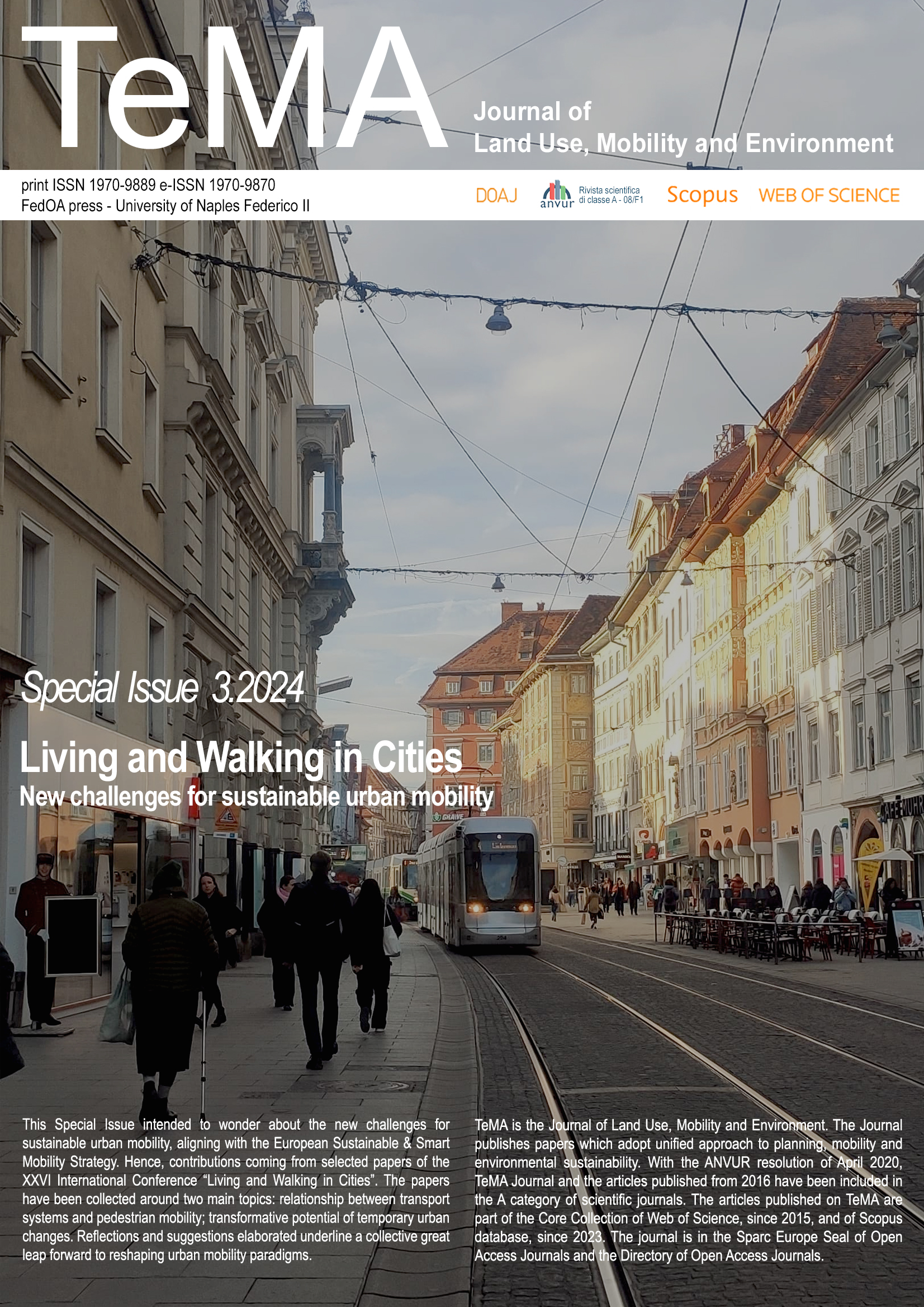Mobility, participation and sustainable regeneration. Urban projects in Liguria Region
Abstract
The paper reports different experiences in which mobility, participation and sustainable regeneration represent fundamental issues for our cities. The applications are developed in idea competitions promoted by municipal governments and associations. Rethinking mobility and orienting actions towards sustainability means putting people at the center of urban strategies. In this context, the 4 innovation helix framework, and so, the involvement of local actors: people, university, company and administration, is indispensable for guiding society towards sustainable development according to 2030 Agenda. In the experiences illustrated, the role of the University emerged as a connector capable of collaborating together and building synergies between the various actors involved with the common objective of improving the liveability of our cities. Liveability which is closely linked to the improvement of mobility services and their intramodality with important repercussions on the accessibility of services. The actions undertaken for more sustainable mobility lead to a path that increases the demand for integrated services for the movement of people and goods but also the attractiveness of the area from an environmental, social, tourist and economic point of view. The urban projects presented were carried out as part of university courses in collaboration with public administrations of the Ligurian Region.
Downloads
References
Carta, M. & Ronsivalle, D. (Eds.). (2016). The Fluid City Paradigm. Regeneration as an Urban Renewal Strategy. Switzerland, Springer International Publishing
Collier, S., Newell, J.P. & Melissa, S. (2016). Defining urban resilience: A review. Landscape and Urban Planning, 147, 38-49. https://doi.org/10.1016/j.landurbplan.2015.11.011
Elmqvist, T., Andersson, E., Frantzeskaki, N., McPhearson, T., Gaffney, O., Takeuchi, K. & Folke, C. (2016). Sustainability and resilience for transformation in the urban century. Nature Sustainability, 2, 267–273
European Committee of the Regions (2019). A Territorial Approach for the Implementation of the SDGs in the EU. The Role of the European Committee of the Regions-Study. European Committee of the Regions: Brussels, Belgium. Retrieved from: https://op.europa.eu/en/publication-detail/-/publication/21866ea2-574c-11e9-a8ed-01aa75ed71a1/language-en
Pirlone, F., Spadaro, I., De Nicola, M. & Sabattini, M. (2022). Sustainable urban regeneration in port-cities. A participatory project for the Genoa waterfront. TeMA - Journal of Land Use, Mobility and Environment, 15 (1), 89-110. https://doi.org/10.6093/1970-9870/8322
Giovinazzi, O. & Moretti, M. (2010). Port Cities and Urban Waterfront: Transformations and Opportunities. TeMA - Journal of Land Use, Mobility and Environment, 2. https://doi.org/10.6092/1970-9870/123
OECD (2003). Annual Report 2003. Retrieved from: https://www.oecd.org/about/2506789.pdf (accessed January 2003)
Elelman, R. & Feldman, L. (2018). The future of citizen engagement in cities—The council of citizen engagement in sustainable urban strategies (ConCensus). Futures, 101, 80–91. https://doi.org/10.1016/j.futures.2018.06.012
UN (2015). Transforming our world: the 2030 Agenda for Sustainable Development. Retrieved from: https://www.refworld.org/docid/57b6e3e44.html
Copyright (c) 2024 TeMA - Journal of Land Use, Mobility and Environment

This work is licensed under a Creative Commons Attribution 4.0 International License.
Authors who publish in this journal agree to the following:
1. Authors retain the rights to their work and give in to the journal the right of first publication of the work simultaneously licensed under a Creative Commons License - Attribution that allows others to share the work indicating the authorship and the initial publication in this journal.
2. Authors can adhere to other agreements of non-exclusive license for the distribution of the published version of the work (ex. To deposit it in an institutional repository or to publish it in a monography), provided to indicate that the document was first published in this journal.
3. Authors can distribute their work online (ex. In institutional repositories or in their website) prior to and during the submission process, as it can lead to productive exchanges and it can increase the quotations of the published work (See The Effect of Open Access)

